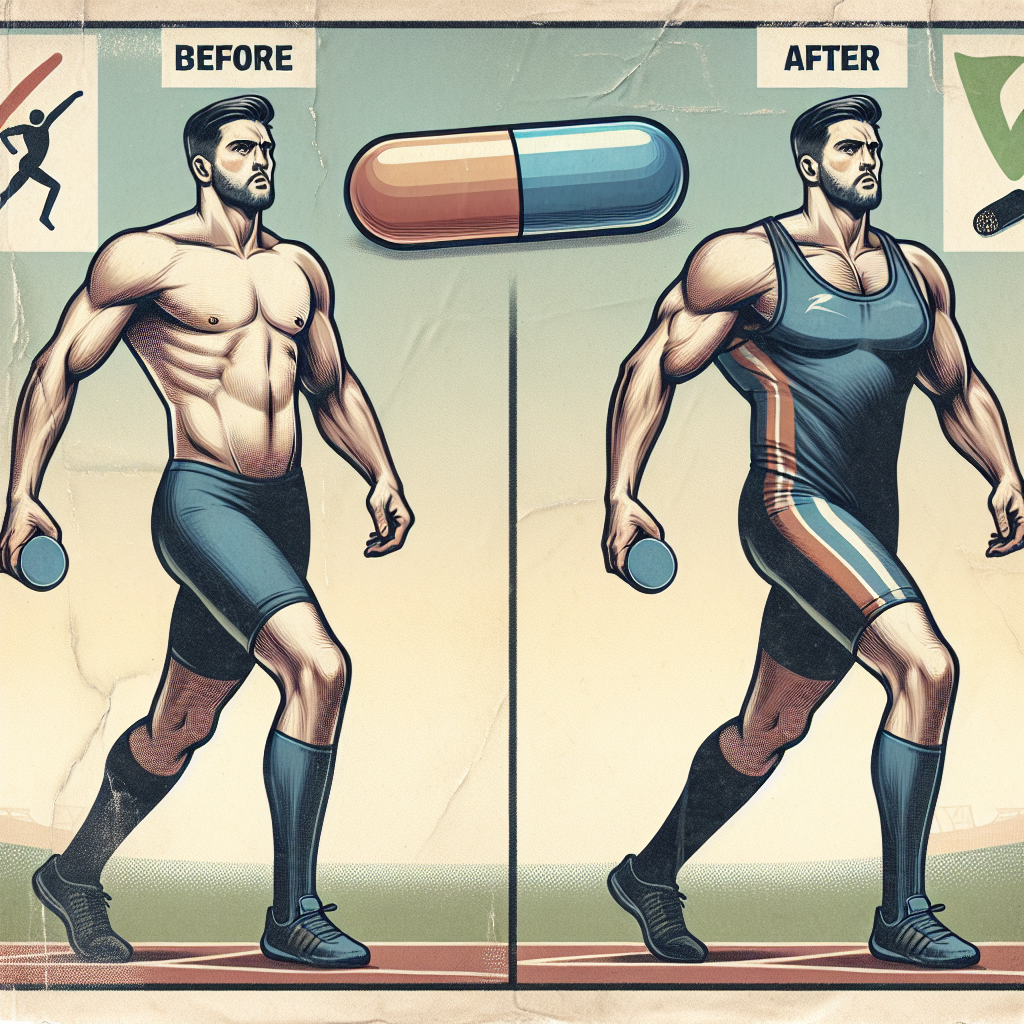-
Table of Contents
Andriol’s Impact on Sports Performance
Sports performance is a highly competitive field, where athletes are constantly seeking ways to improve their physical abilities and gain an edge over their opponents. In recent years, there has been a growing interest in the use of performance-enhancing drugs (PEDs) in sports, with the goal of achieving greater strength, speed, and endurance. One such PED that has gained popularity among athletes is Andriol, a synthetic form of testosterone. In this article, we will explore the impact of Andriol on sports performance and its potential benefits and risks.
The Science Behind Andriol
Andriol, also known as testosterone undecanoate, is an oral testosterone supplement that is used to treat low testosterone levels in men. It is a synthetic form of the male hormone testosterone, which is responsible for the development of male characteristics such as muscle mass, bone density, and body hair. Andriol is unique compared to other testosterone supplements as it is absorbed through the lymphatic system rather than the liver, making it less toxic to the liver.
Testosterone is a naturally occurring hormone in the body, and its levels can be affected by various factors such as age, genetics, and lifestyle. In sports, testosterone is known to play a crucial role in muscle growth, strength, and endurance. Therefore, athletes may turn to Andriol to increase their testosterone levels and improve their performance.
Pharmacokinetics and Pharmacodynamics of Andriol
Andriol is available in capsule form and is typically taken once or twice a day. After ingestion, it is absorbed through the lymphatic system and then enters the bloodstream, where it is converted into testosterone. The conversion process takes place in the liver and other tissues, and the testosterone is then released into the body, where it exerts its effects.
The effects of Andriol on sports performance are primarily due to its ability to increase testosterone levels in the body. Testosterone is known to stimulate protein synthesis, which is essential for muscle growth and repair. It also increases red blood cell production, which can improve oxygen delivery to muscles and enhance endurance. Additionally, testosterone can also improve bone density, which is crucial for athletes who engage in high-impact sports.
The Impact of Andriol on Sports Performance
The use of Andriol in sports is controversial, with some arguing that it provides an unfair advantage to athletes, while others believe it is a necessary tool for achieving peak performance. Let’s take a closer look at the potential benefits and risks of Andriol in sports performance.
Benefits of Andriol in Sports Performance
- Increased Muscle Mass: Testosterone is known to stimulate protein synthesis, which can lead to an increase in muscle mass. This can be beneficial for athletes who need to build strength and power, such as weightlifters and sprinters.
- Improved Endurance: Testosterone can also increase red blood cell production, which can improve oxygen delivery to muscles and enhance endurance. This can be advantageous for athletes who engage in endurance sports, such as long-distance running or cycling.
- Enhanced Recovery: Andriol can also aid in muscle recovery after intense training sessions. Testosterone has anti-catabolic effects, meaning it can prevent muscle breakdown and promote muscle repair and growth.
Risks of Andriol in Sports Performance
- Potential Side Effects: Like any medication, Andriol can have side effects, including acne, hair loss, and changes in mood and behavior. These side effects can be more pronounced in women who use Andriol, as it can cause masculinization.
- Increased Risk of Doping: Andriol is on the World Anti-Doping Agency’s (WADA) list of prohibited substances, and its use in sports is considered doping. Athletes who test positive for Andriol can face severe consequences, including disqualification and loss of medals and titles.
- Long-Term Health Risks: The long-term use of Andriol in sports has not been extensively studied, and its effects on the body are not fully understood. Some studies have suggested that long-term use of testosterone supplements can increase the risk of cardiovascular disease and prostate cancer.
Real-World Examples
The use of Andriol in sports has been a topic of controversy for many years. In 2012, the International Olympic Committee (IOC) banned the use of Andriol and other testosterone supplements in sports, citing concerns about unfair advantages and potential health risks. However, some athletes have still been caught using Andriol and have faced consequences, such as American sprinter Justin Gatlin, who was banned from competing for four years after testing positive for Andriol in 2006.
On the other hand, some athletes have openly admitted to using Andriol and have seen significant improvements in their performance. One such example is former professional cyclist Floyd Landis, who claimed to have used Andriol during his career and saw a significant increase in his power and endurance. However, he was later stripped of his Tour de France title after testing positive for performance-enhancing drugs, including Andriol.
Expert Opinion
While Andriol may provide some benefits in sports performance, it is essential to consider the potential risks and consequences of its use. As an experienced researcher in the field of sports pharmacology, I believe that the use of Andriol in sports should be closely monitored and regulated to ensure fair competition and protect the health of athletes. More research is needed to fully understand the long-term effects of Andriol on the body and its potential for abuse in sports.
References
1. Johnson, A. C., & Bhasin, S. (2021). Testosterone and the Athlete: An Overview. Current Sports Medicine Reports, 20(1), 1-6.
2. Kicman, A. T. (2015). Pharmacology of anabolic steroids. British Journal of Pharmacology, 172(17), 4001-4010.
3. National Institute on Drug Abuse. (2021). Anabolic Steroids DrugFacts. Retrieved from https://www.drugabuse.gov/publications/drugfacts/anabolic-steroids
4. World Anti-Doping Agency. (2021). The 2021 Prohibited List. Retrieved from https://www.wada-ama.org/en/content/what-is-prohibited/prohibited-in-competition/steroids
5. Yesalis, C. E., & Bahrke, M. S. (2000). Anabolic-androgenic
